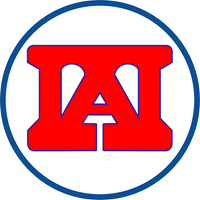Author Guidance
General Instruction
- Articles are typed with one spacing) on A4 paper. for tables and long direct quotations (> 3.5 lines) typed with row distance one with an indented style.
- The length of the article is not more than 7,000 words with the letters Times New Roman size 12 or a maximum of 25 pages A4, and a top-down-left-right margin of at least 1 ".
- The front page (cover) must specify the title and identity of the author.
- All sequential numbered pages. Footnotes, headers, and footers are not for the author's name or article title, but for additional information about writing.
- The table is typed with the distance of row one, with the initial horizontal line (table subtitles) and the end, without vertical lines. The table is numbered 1 last.
- Quotes and Reference Lists are written based on the index of the author's name. List of references should formulate the name of the author referred to completely and thoroughly.
Article Systematic
1. TITLE
The title of the text is composed of no more than 20 words. Use of abbreviations is not allowed. The title of the manuscript is written in Indonesian or English in accordance with this text. The title of the text is written in font size 14pt in bold format. The title of the script is followed by the name (name), origin of the institution, and the email address of the author.
2. ABSTRACT
This section contains a summary of the full subject matter of the entire article and consists of: problems, objectives, methods, findings / conclusions. Abstracts are presented at the beginning and presentation of approximately 150 to 400 words (in English). Abstract followed by at least four keywords (key words).
3. INTRODUCTION
This section contains background (motivation / issues) research / thoughts, problems, statement of purpose, and organization of article writing (if necessary). At the end of the introduction, the purpose of writing / research must be clearly stated.
4. LITERATURE REVIEW AND DEVELOPMENT OF HYPOTHESIS
For research articles it is best to present a review of the literature, the results of previous research, and the development of hypotheses. Whereas for thought articles it is better to explain the discussion regarding the issues / issues raised in the introduction.
5. RESEARCH METHODS
This section is mainly for research articles. Important things that need to be included in this section are: data selection and collection, population and sample, operational measurement and definition of variables, and data analysis methods.
6. RESEARCH RESULTS AND DISCUSSION
The results of the study contain the findings of the research both presented in the form of written bodies, tables, and drawings. Pictures and tables must be numbered in sequence. The discussion is about the interpretation of the results of the research obtained and the discussion that is related to the results of previous studies that have been reported.
7. CONCLUSIONS AND SUGGESTIONS
Conclusions state the research findings based on the results of research and discussion. Suggestions can be theoretical suggestions or practical advice (managerial implications). Theoretical advice covers what needs to be further investigated for the development of science and the fields of study. Practical advice relates to the statement of application of related science.
8. BIBLIOGRAPHY
The bibliography is a list of all the literature used in the text. This section contains the sources cited in the body of article writing and does not contain sources not referred to in the body of writing. Made in alphabetical order (A-Z) from the last name, abbreviated first name (for the second and third writers starting from the abbreviated first name then the last name). Writing bibliography uses the Harfard method (name, year) with a period separator






